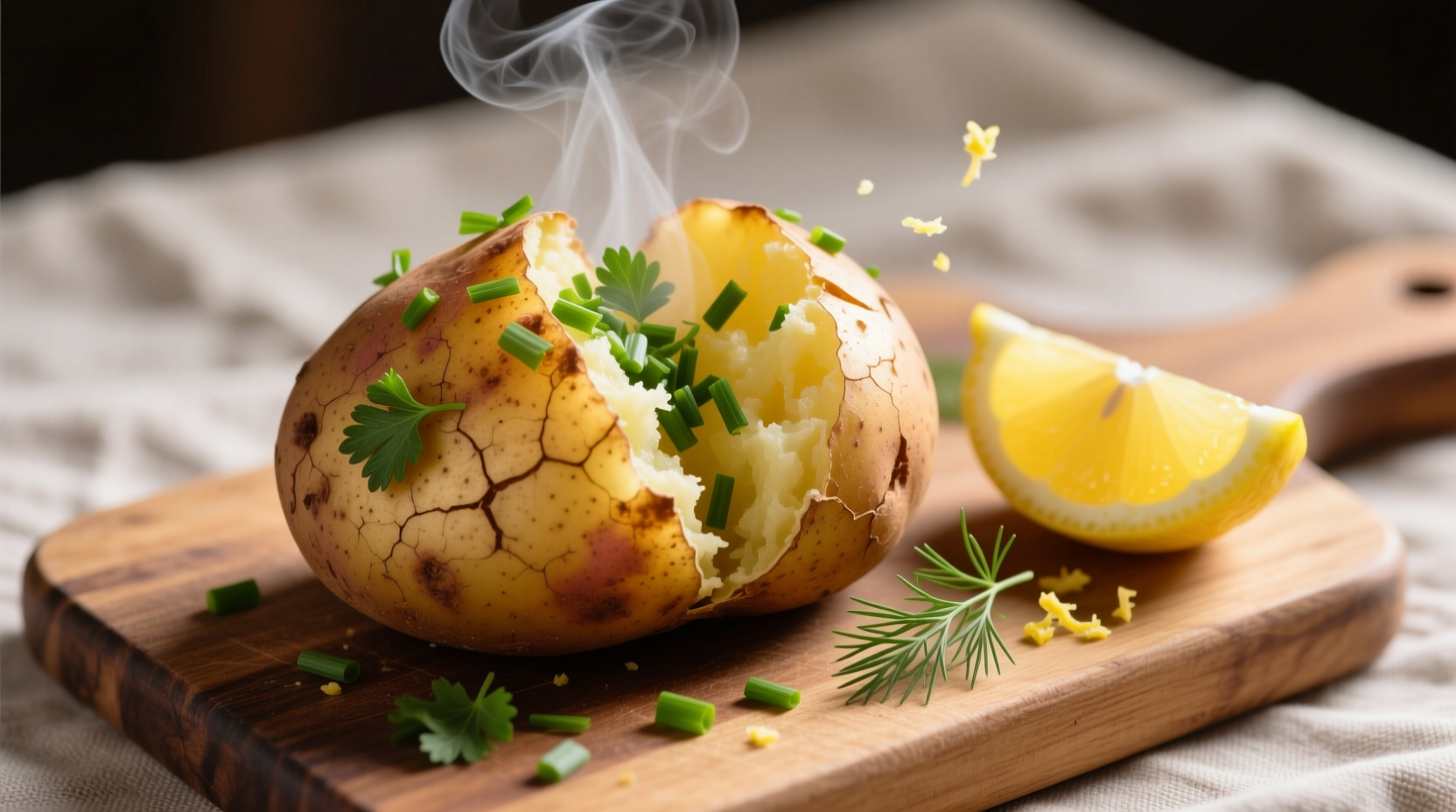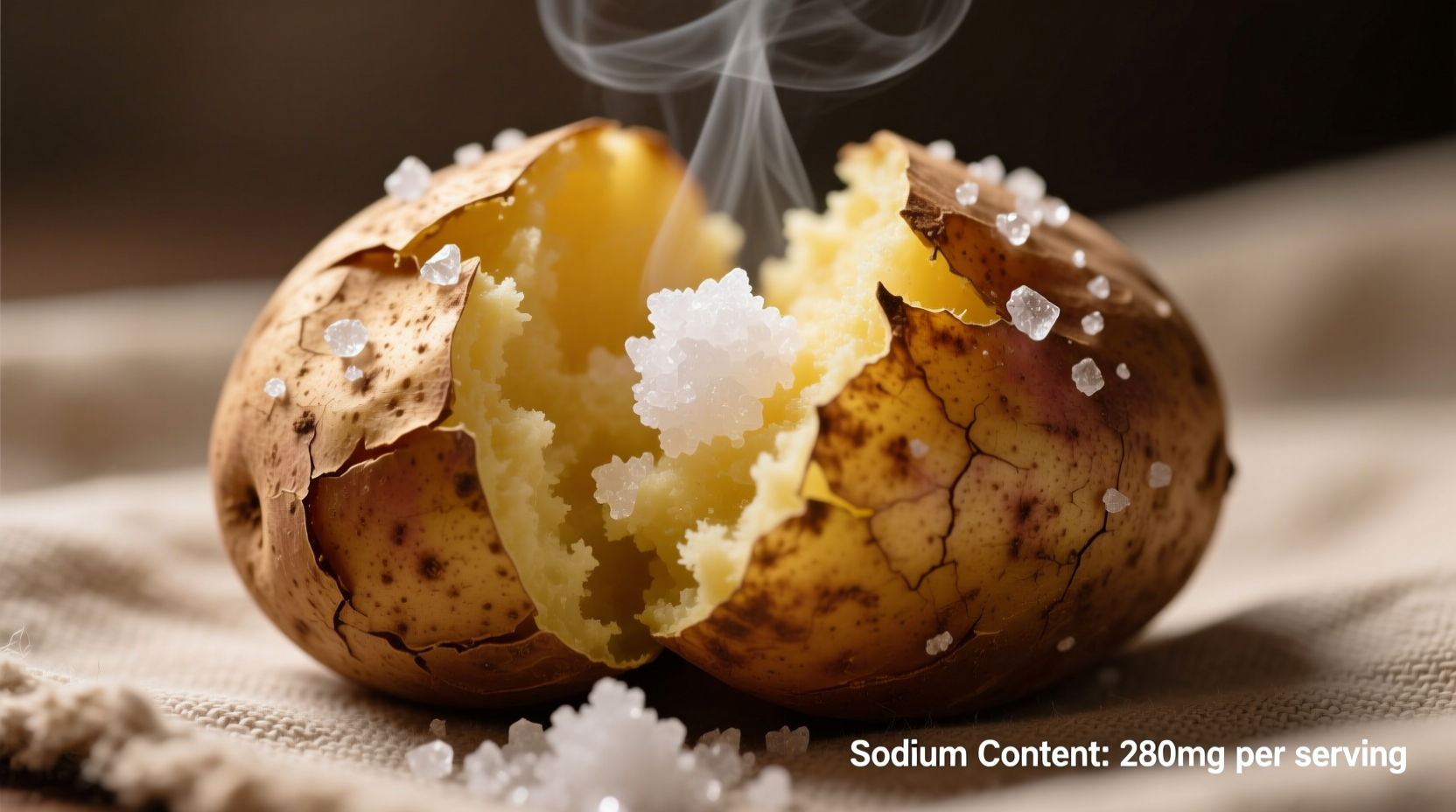A medium baked potato (173g) with skin contains just 17-20mg of natural sodium—only 1% of the daily recommended limit. Adding salt dramatically increases this amount: one teaspoon of table salt adds 2,325mg of sodium, exceeding the American Heart Association's daily recommendation.
Why Baked Potatoes Are Naturally Low-Sodium Superstars
When you're watching your sodium intake, baked potatoes deserve a prime spot in your meal planning. Unlike processed foods that often hide excessive sodium, plain baked potatoes contain minimal natural sodium. According to the USDA FoodData Central database, a medium-sized baked potato (about 173 grams) with skin provides only 17-20mg of sodium—a negligible amount compared to the American Heart Association's recommended daily limit of 2,300mg for most adults.
The confusion about potatoes and sodium typically stems from preparation methods rather than the potato itself. Potatoes naturally contain potassium, which actually helps balance sodium levels in your body. One medium baked potato delivers approximately 926mg of potassium—more than bananas—making it an excellent choice for maintaining healthy blood pressure.
How Preparation Methods Impact Sodium Content
Your cooking choices dramatically affect the final sodium content of your baked potato. Let's examine how different preparation methods change the nutritional profile:
| Preparation Method | Serving Size | Sodium Content | % Daily Value |
|---|---|---|---|
| Plain baked potato with skin | 173g (medium) | 17mg | 1% |
| Baked potato without skin | 136g | 11mg | 0.5% |
| With 1 tsp table salt | 173g + salt | 2,342mg | 102% |
| With 1 tbsp butter | 173g + butter | 100mg | 4% |
| With 2 tbsp sour cream | 173g + sour cream | 150mg | 6% |
This comparison clearly shows that the potato itself contributes minimal sodium, while common toppings significantly increase the total. The USDA National Nutrient Database confirms these values, making it easy to plan meals that fit your dietary needs.
Context Matters: When Potato Sodium Becomes Significant
For most healthy adults, the natural sodium in potatoes poses no concern. However, specific health conditions change this equation:
- Heart disease patients: The American Heart Association recommends no more than 1,500mg daily for those with hypertension. While the potato itself is fine, added salt becomes problematic.
- Kidney disease patients: Those with impaired kidney function need to monitor both sodium and potassium intake, requiring careful portion control.
- Sodium-sensitive individuals: Approximately 25% of the population experiences blood pressure changes with sodium intake, making topping choices crucial.
Understanding these context boundaries helps you make informed decisions. The Dietary Guidelines for Americans 2020-2025 emphasizes that most Americans consume nearly 50% more sodium than recommended, primarily from processed foods and restaurant meals—not from whole foods like plain baked potatoes.
Smart Strategies for Enjoying Baked Potatoes on a Low-Sodium Diet
You don't need to eliminate this nutritious food from your diet—just make smarter preparation choices:
- Keep the skin on: Potato skins contain fiber and nutrients while adding virtually no sodium. Scrub thoroughly instead of peeling.
- Season creatively: Replace salt with garlic powder, onion powder, black pepper, or fresh herbs like rosemary and thyme.
- Choose low-sodium toppings: Opt for plain Greek yogurt instead of sour cream, or try salsa made without added salt.
- Control portion sizes: A small potato (138g) contains only 11mg sodium, making it easier to stay within limits.
- Rinse after cooking: Briefly rinsing cooked potatoes can remove surface sodium if you've accidentally added too much salt.
Research published in the Journal of the Academy of Nutrition and Dietetics shows that flavor perception adapts within 6-8 weeks of reducing sodium intake, making naturally flavorful foods like potatoes more satisfying over time.

Putting Potato Sodium in Perspective
When evaluating sodium content, context is essential. Consider these comparisons:
- A plain baked potato contains less sodium than a single slice of bread (typically 100-200mg)
- The natural sodium in a baked potato equals about 1/100th of a typical fast-food french fry serving
- You'd need to eat over 100 plain baked potatoes to reach the daily sodium limit
The Centers for Disease Control and Prevention reports that 70% of dietary sodium comes from processed and restaurant foods, not from the salt shaker at home. This puts the naturally low sodium content of baked potatoes into proper perspective.
Practical Meal Planning Tips
Integrating baked potatoes into a low-sodium eating pattern is straightforward with these approaches:
- Build balanced meals: Pair your potato with grilled chicken (no added salt) and steamed vegetables for a complete, low-sodium dinner
- Create flavorful combinations: Try lemon juice and dill, roasted garlic and parsley, or smoked paprika (sodium-free) for depth without salt
- Batch cooking: Bake multiple potatoes at once and store in the refrigerator for quick, healthy meals throughout the week
- Track your intake: Use free nutrition apps to monitor total daily sodium when experimenting with new recipes
Registered dietitians consistently recommend baked potatoes as part of DASH (Dietary Approaches to Stop Hypertension) eating patterns, which have been clinically proven to lower blood pressure. The key is focusing on preparation methods rather than avoiding this nutrient-dense food.











 浙公网安备
33010002000092号
浙公网安备
33010002000092号 浙B2-20120091-4
浙B2-20120091-4